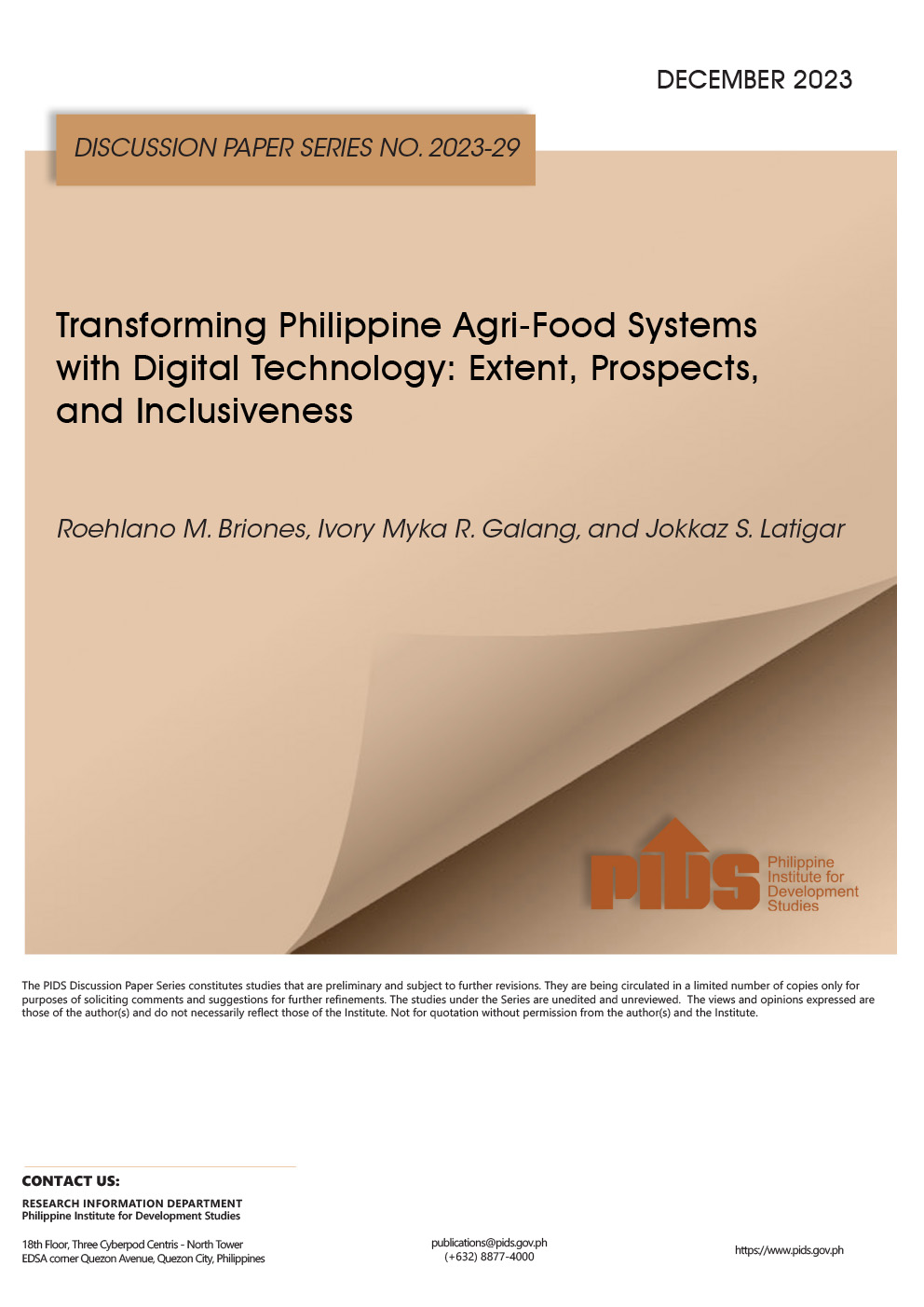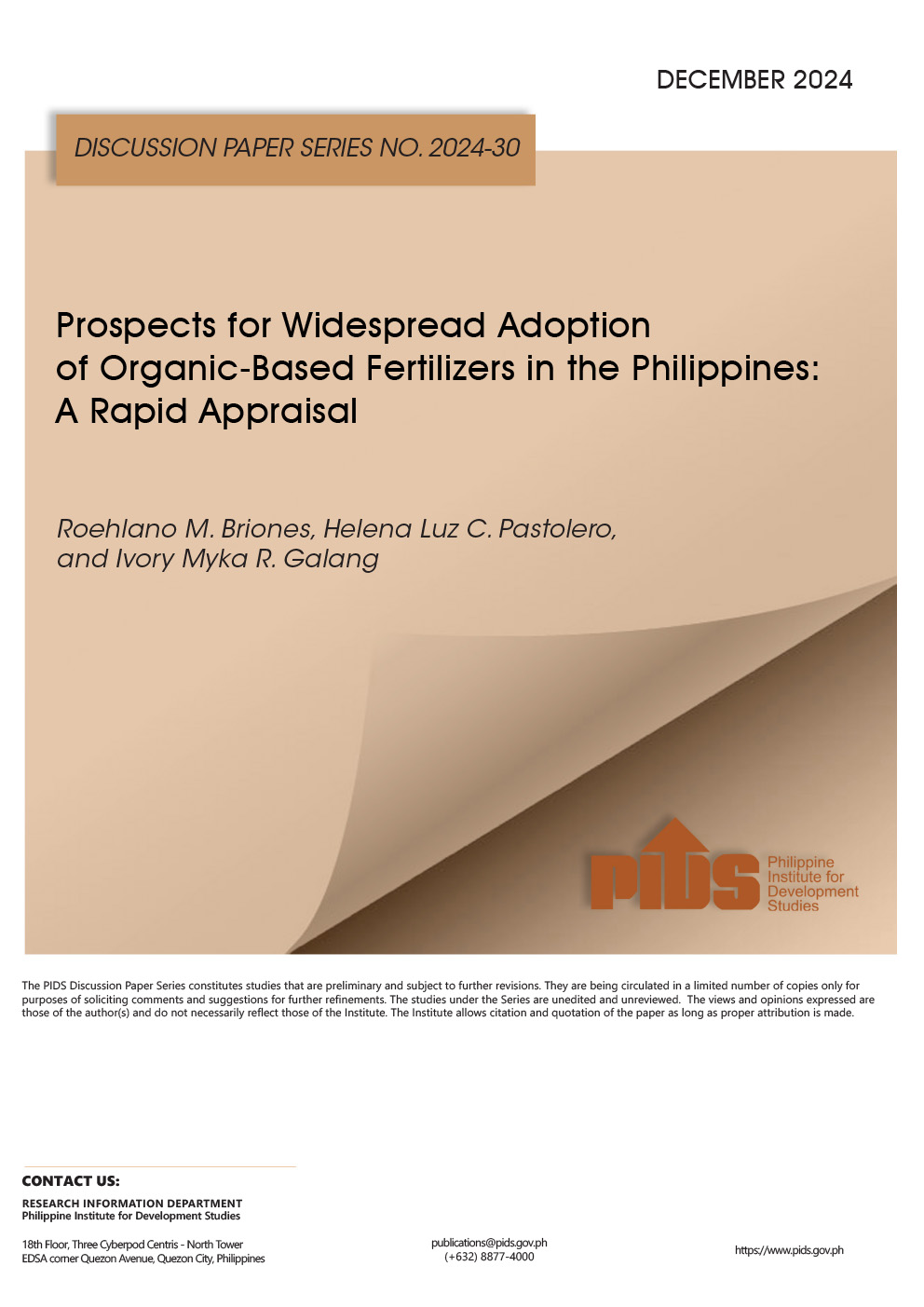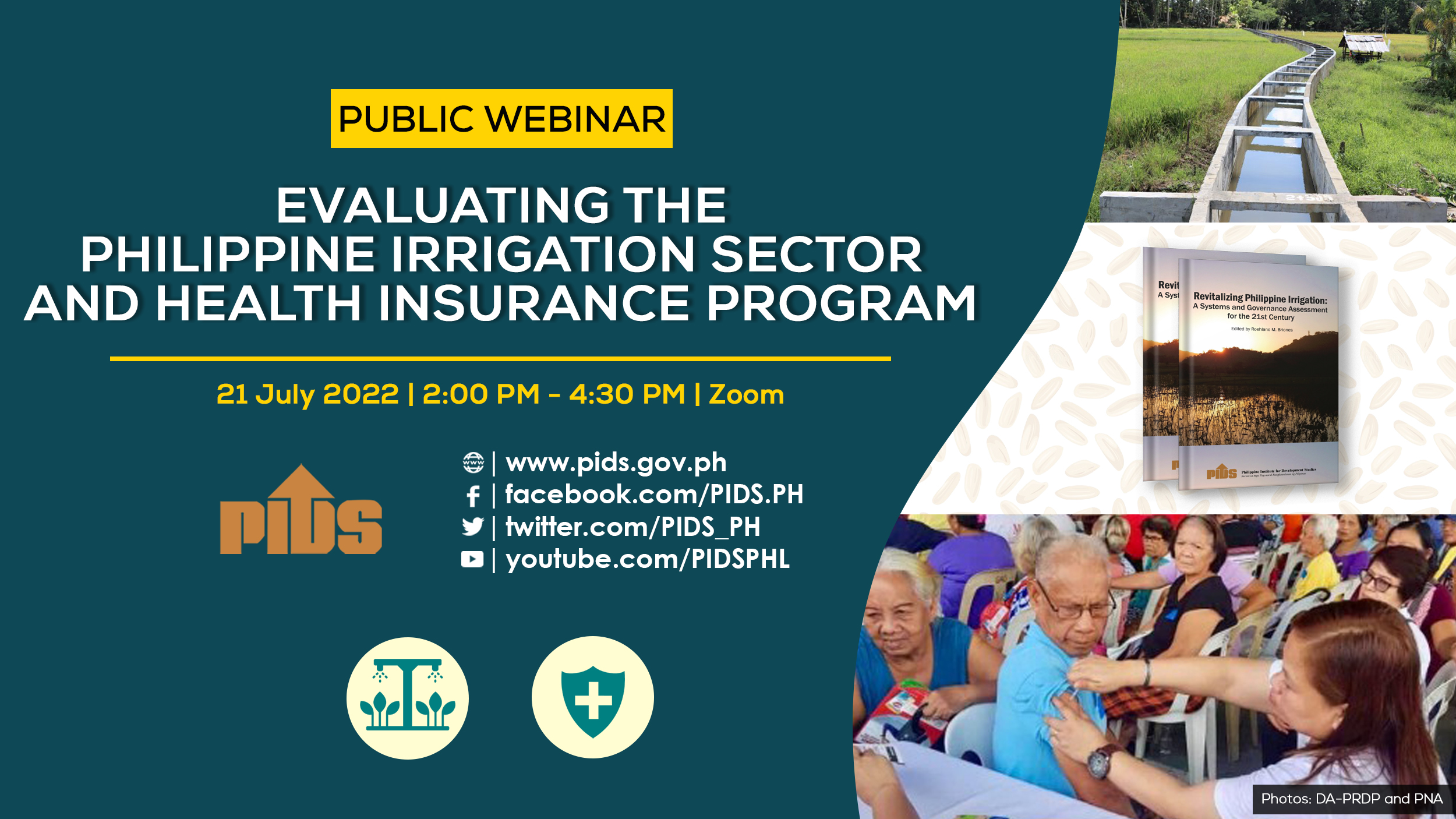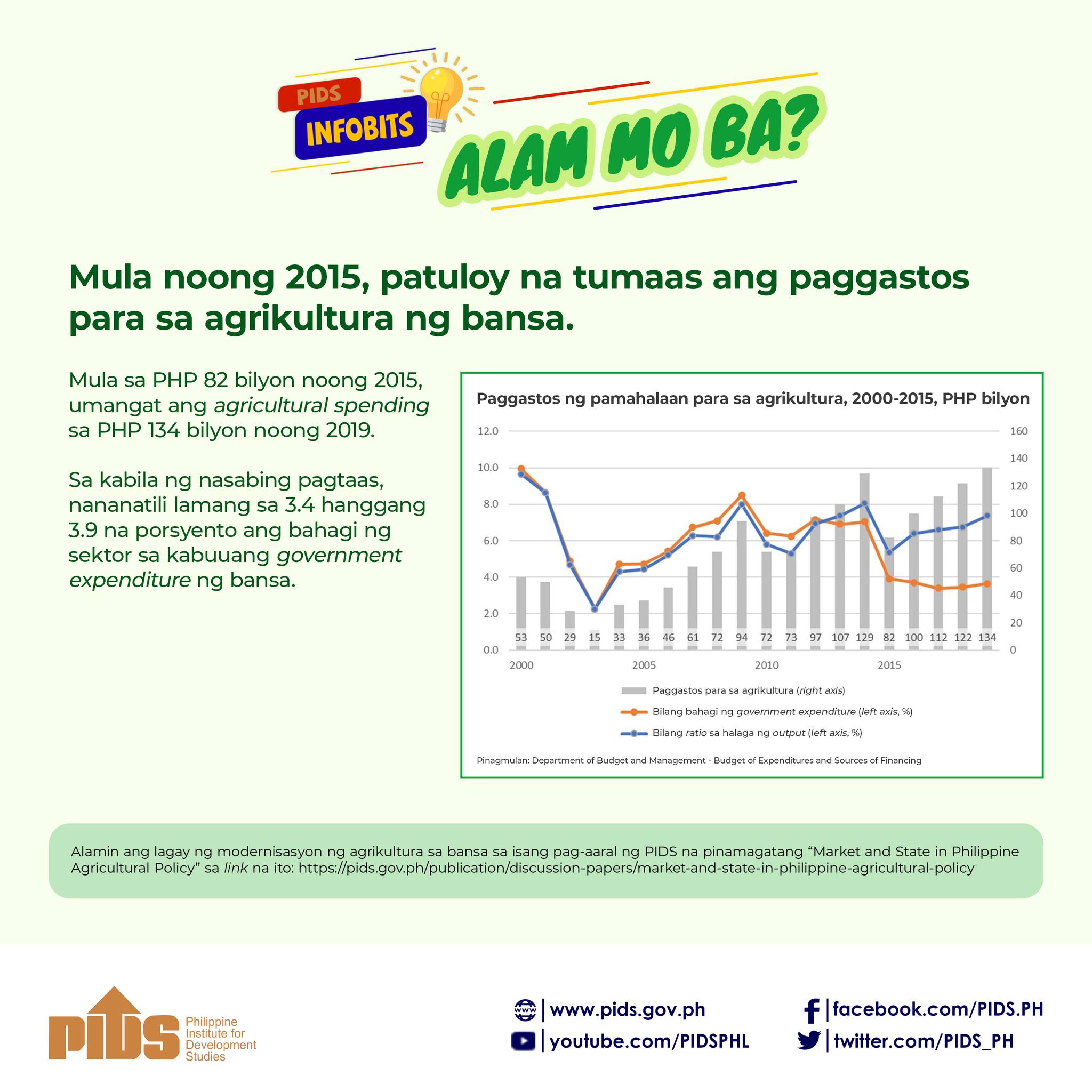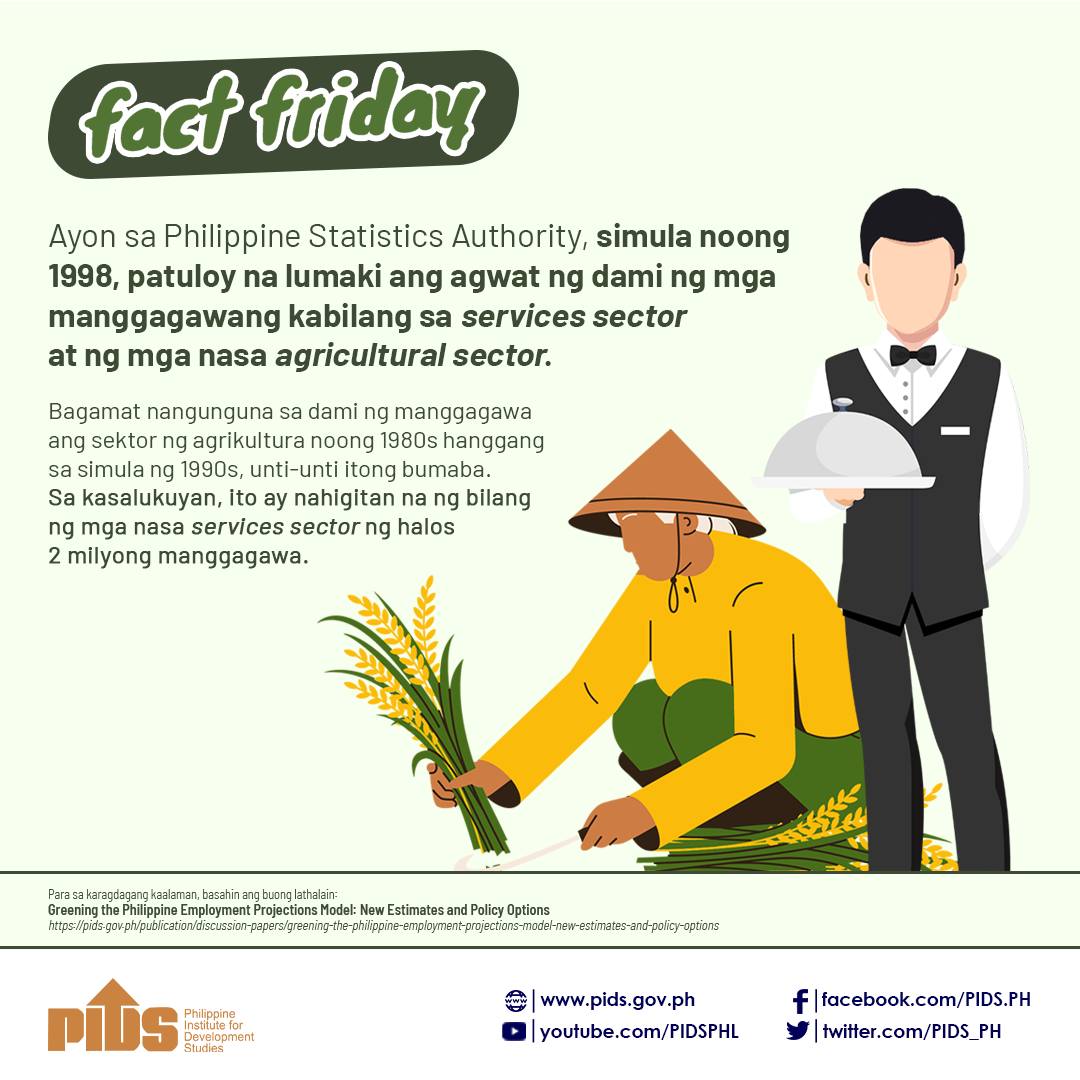
The government should come up with a comprehensive and integrated approach to improve the country’s irrigation systems.
Raul Montemayor, national manager of the Federation of Free Farmers, stressed this during the virtual launch of the Philippine Institute for Development Studies (PIDS) book titled “Revitalizing Philippine Irrigation: A Systems and Governance Assessment for the 21st Century” held recently.
Montemayor noted other interventions to consider in designing an irrigation system, such as extension services, access to technology, access to seeds, marketing assistance, and crop insurance.
He also pointed out that the proper approach is to inspect the area first to see what potential crops can be planted and what kind of water requirement is needed to know what irrigation system is suitable.
“All of these have to be part of the strategy. When you design an irrigation system, you have to integrate it with all the other interventions,” he said.
To improve farmers' income, Montemayor said that crop diversification or the addition of crops or cropping systems in agricultural production is essential, rather than sticking to monocropping or growing a single crop yearly on the same piece of land, in the absence of crop rotation.
The study results show that limiting the production into a single crop, like palay, will result in a negative internal rate of return, which means that the cost is more than the benefit.
Montemayor also cited operational concerns in the agriculture sector.
One is the poor design of irrigation systems. Since many irrigation projects are funded, there is a tendency to overestimate the impacts of the system to get the loan approval, resulting in an irrigation system that “does not live up to expectations”.
Another issue is the delay in the completion of projects. Montemayor said that a huge amount of money is allotted to new irrigation systems, yet there is a continuous decline in harvested areas.
To address these issues, Montemayor offered some recommendations.
He said the government should consider extreme weather conditions, flood control, and drainage systems in designing irrigation projects.
He also urged the government to look into more efficient water management, such as recycling and impounding, and to explore technologies in irrigation that are more cost-effective.
Lastly, Montemayor recommended strengthening various stakeholders and irrigators’ associations.
“It will be the farmers who will make the system effective, or they can also damage it if they do not take care of it. So, we really have to involve them from the start,” he said. ###
Watch the video of the virtual launch of the PIDS book at https://www.facebook.com/PIDS.PH/videos/412985720031043. For more videos of PIDS events, go to https://www.pids.gov.ph/videos.
Raul Montemayor, national manager of the Federation of Free Farmers, stressed this during the virtual launch of the Philippine Institute for Development Studies (PIDS) book titled “Revitalizing Philippine Irrigation: A Systems and Governance Assessment for the 21st Century” held recently.
Montemayor noted other interventions to consider in designing an irrigation system, such as extension services, access to technology, access to seeds, marketing assistance, and crop insurance.
He also pointed out that the proper approach is to inspect the area first to see what potential crops can be planted and what kind of water requirement is needed to know what irrigation system is suitable.
“All of these have to be part of the strategy. When you design an irrigation system, you have to integrate it with all the other interventions,” he said.
To improve farmers' income, Montemayor said that crop diversification or the addition of crops or cropping systems in agricultural production is essential, rather than sticking to monocropping or growing a single crop yearly on the same piece of land, in the absence of crop rotation.
The study results show that limiting the production into a single crop, like palay, will result in a negative internal rate of return, which means that the cost is more than the benefit.
Montemayor also cited operational concerns in the agriculture sector.
One is the poor design of irrigation systems. Since many irrigation projects are funded, there is a tendency to overestimate the impacts of the system to get the loan approval, resulting in an irrigation system that “does not live up to expectations”.
Another issue is the delay in the completion of projects. Montemayor said that a huge amount of money is allotted to new irrigation systems, yet there is a continuous decline in harvested areas.
To address these issues, Montemayor offered some recommendations.
He said the government should consider extreme weather conditions, flood control, and drainage systems in designing irrigation projects.
He also urged the government to look into more efficient water management, such as recycling and impounding, and to explore technologies in irrigation that are more cost-effective.
Lastly, Montemayor recommended strengthening various stakeholders and irrigators’ associations.
“It will be the farmers who will make the system effective, or they can also damage it if they do not take care of it. So, we really have to involve them from the start,” he said. ###
Watch the video of the virtual launch of the PIDS book at https://www.facebook.com/PIDS.PH/videos/412985720031043. For more videos of PIDS events, go to https://www.pids.gov.ph/videos.

